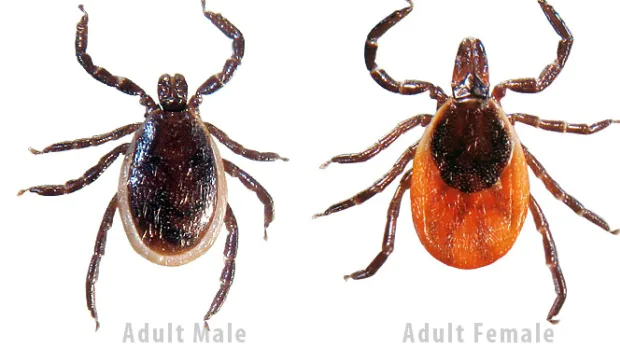A mild winter, followed by a damp summer means tick numbers are up as we head into the fall, when ticks are most active in their search for a blood meal.
Joe Hunt isn’t usually squeamish.
“I’m not a guy who gets creeped out, but that creeped me out,” Hunt said of a recent run-in with a tick.
He’s lived in the same spot outside St. George for 45 years and has only seen the occasional tick, mostly on his dog. He doesn’t remember ever finding one on himself — until June 30, that is.
After doing some work outside earlier that day, Hunt felt something crawling on his arm. It was a tick.
And it wasn’t alone.
He estimates that there were between 24 and 30 ticks on him — and some of them were already embedded in his flesh and feeding on his blood.
“I still have times at night when I think I feel something crawling on me,” said Hunt.
It might have been a bad experience for Hunt, but it’s certainly been a good year for ticks.
It was a mild winter and a damp summer – and ticks really like moisture, Mount Allison University biology professor Vett Lloyd said.
“So the ticks were active all summer. They got more blood. They laid more eggs. They’re just happy little crawly creatures,” said Lloyd.
And they’re about to get even happier.
“With the cooler weather starting to come in the fall, they’re going to be coming out and very actively searching for their last blood meal before the winter.”
More ticks becoming even more active is not good news for humans, considering those potential blood meals include humans and their pets.
A tick’s life “is not what a human would call exciting,” Lloyd said.
“They spend their nights in the leaf litter at the base of long grass or trees. Then, if it’s suitably damp and not too hot or cold, they make their move — well, more of a grab really.
“They’ll crawl up a long bit of grass or up a small shrub, hang on with their back legs, stick their front legs out and just wait for something with blood to wander by. If something with blood wanders by, they grab onto it, spend about a week drinking blood, and then drop off when they’re full.”
If they don’t manage to feed that day, they try again the next day — or year.
That’s right: ticks can survive a whole year without a blood meal.
“They are really, really hardy,” Lloyd said.
They don’t do a lot of moving, so they conserve energy very well. But if a female is going to reproduce, she does need to have a good feeding just before or after mating, said Lloyd.
“She can then cheerfully go and lay some 3,000 eggs. The eggs are incredibly hardy. You have to take the eggs down to about minus 30 before they pop. So they over-winter really, really well. And then in the spring, they hatch out and you get lots of little baby ticks.”
So the damp season means more active ticks, which means more opportunities to feed, which means more baby ticks, explained Lloyd.
“So we’ll see the worst of this next year, I would expect,” she said.
And it’s not the bite that’s the problem. It’s the diseases that ticks can transmit to humans and other animals — bacteria, viruses, worms, “all kinds of nasty things,” said Lloyd.
One of the biggest concerns is Lyme disease.
Many types of ticks bite people, but only black-legged ticks transmit the bacteria that cause Lyme disease. Signs and symptoms of early Lyme disease include:
- a characteristic skin rash that looks like a bull’s eye
- fatigue
- chills and fever
- headache
- muscle and joint pain
- swollen lymph nodes
If untreated, symptoms, including arthritis and neurological problems, can appear months after infection, according to a brochure from the Centers for Disease Control and Prevention (CDC).
Lloyd said there are ways to avoid infection.
As a preventative measure, bug spray helps keep ticks away. After being outside, Lloyd said it’s very important to do a tick check and remove any embedded ticks.
“Do tick checks because preventing a disease is just way better than treating it after you get it,” she said.
While ticks can transmit a number of pathogens, the good news is that the bacteria that cause Lyme disease move particularly slowly, said Lloyd.
According to the CDC, ticks usually need to be attached for 36 to 48 hours before they can transmit the bacteria.
Along with increasing numbers of ticks in general, the percentage of ticks that carry Lyme disease is also on the rise.
In southern New Brunswick, about 20 per cent of ticks tested carried the bacteria that cause Lyme disease, although that number is higher in the Saint John area.
The percentage gradually drops the further north you go until it reaches about 13 per cent in northern New Brunswick.






